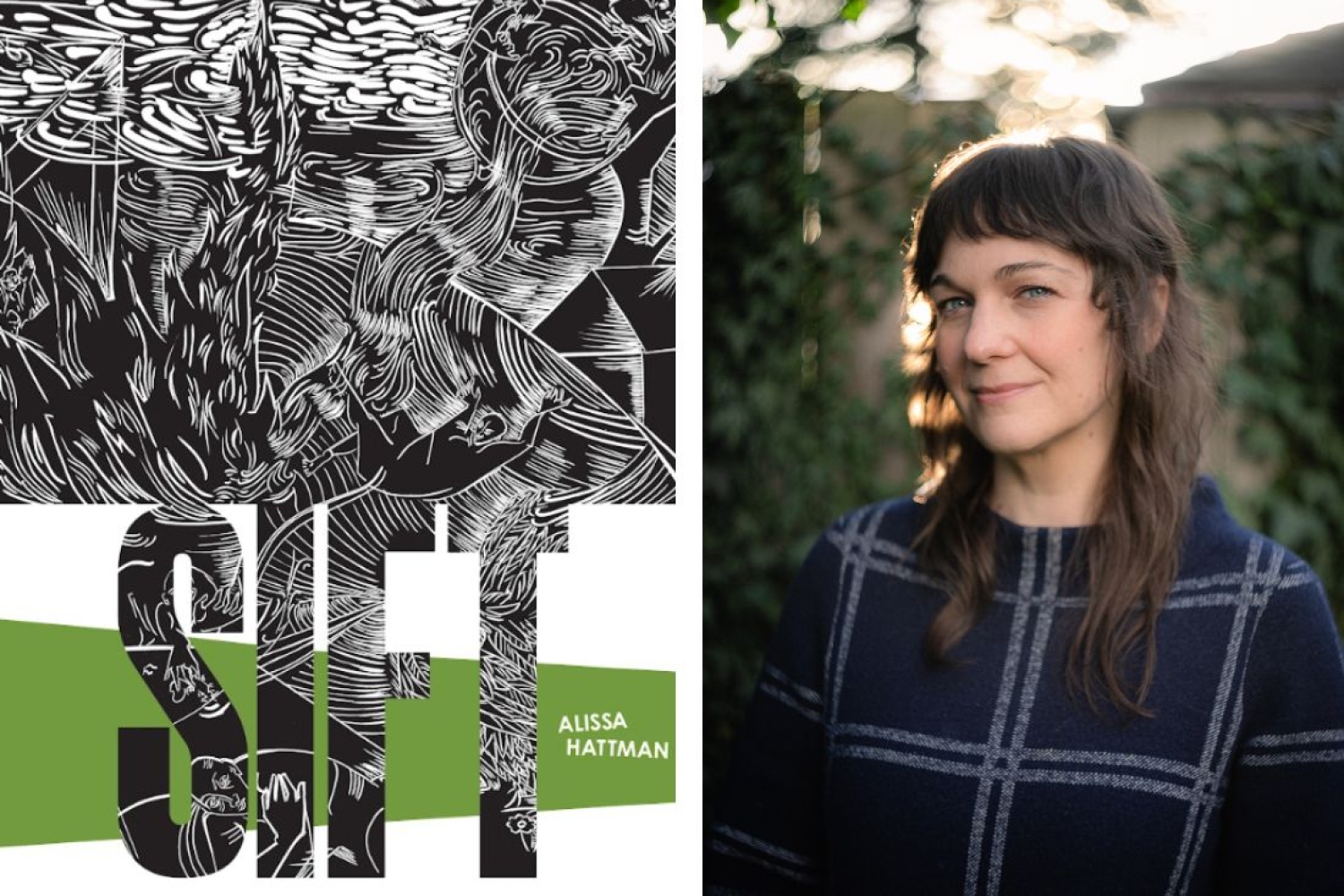

“Perhaps story is a way to remember, or bear witness, perhaps it’s a way to change hearts and minds, perhaps it complicates something we think we’ve clearly defined”, ponders Alissa Hattman on why she believes in the power of storytelling. Her upcoming novel, Sift, explores the quest of two women, trying to find fertile soil in a post-apocalyptic wasteland—grappling with both societal and environmental turmoil. Their bond evolves as their path takes them through arid deserts, scorched forests and pitch-black mountain caves. It narrates a tale of familial scars, the shortcomings of humanity and the art of mutual support in catastrophic times.
THE IDEA
In writing Sift, I was thinking about what remains of stories, especially fragments of stories or half-memories. I liked thinking about the meaning that might be revealed with these fragments in conversation—what story might be gleaned by placing a barrel cactus fragment next to a chapter which is full of painful partial memories, for example. I think the power of a story lies in its potential to repair. Repairing a rupture takes a lot of imagination. It means sitting and imagining one or many perspectives and also imagining a third way of coming together again.
Beyond empathizing with a person, which alone is sometimes hard to do, literature helps us feel the many ways we are all connected. Storytelling awakens our imagination in ways that I think are essential to our remaining time on earth.
THE INFLUENCES
I started writing Sift at the beginning of the pandemic and, at the time, I really struggled to focus. I listened to music—Joanna Newsom, Ragana, Waxahatchee, Adrianne Lenker, Florist. I was taking more walks and getting to know the plant life in my neighborhood. I started reading Gathering Moss by Robin Wall Kimmerer, which turned out to be an influence for the book, next to the moss itself. I read Float by Anne Carson. To learn more about fragmented narrative, I read Fugitive Assemblage by Jennifer Calkins. I read a lot of poetry. The Renunciations by Danika Kelly and Tender Buttons by Gertrude Stein. I brushed up on post-apocalyptic literature—Parable of the Sower by Octavia Butler and Ice by Anna Kavan.
THE CHALLENGES
There is a part in the novel where the characters go through a mountain. At first, they are walking through caverns, but at one point they are physically tunneling through stone, without light and with little air. Writing these sections was a challenge, to say the least. I was in the dark as much as the characters. Maybe other writers have experienced this, but at that moment the writing process felt similar to what the characters were experiencing. But I had it in my mind that the characters would need to stay in the darkness of the mountain for as long as necessary, even though my editors wanted to condense the mountain bits. I pushed back and explained, It’s hard being inside a mountain, I said. It’s dark. You have no navigation tools.
You don’t know if you’re going in circles. She listened to my reasoning for the repetition, the loops, the rhythms. Then, later, she sent the pages back to me, condensed, but with the rhythms and repetition intact. The point being, it was a challenge and I’m grateful to have had an editor who
was open to a conversation and helped me see through the dark.
THE FUTURE
I’m currently taking part in a collaborative project called Delisted, which is an emergent project dedicated to communal, creative engagement with the extinction crisis. It pairs artists with 34 species that the U.S. Fish and Wildlife Service and the National Oceanic and Atmospheric Agency have removed or proposed for removal from coverage under the Endangered Species Act (ESA) because they are considered extinct. The idea is to encourage the public to connect to these more than human others through visual, performance, media art, and workshops. The species I am assigned is the Kaua’i ‘Å‘Å bird. Lately, I’ve been listening to the audio of the birdsong while I am writing. In an unprecedented crisis point of mass extinctions, I’m glad to join other artists and writers who are finding ways to represent collective grief, which I feel is important work.
Words Neeraja Srinivasan
Date September, 2023